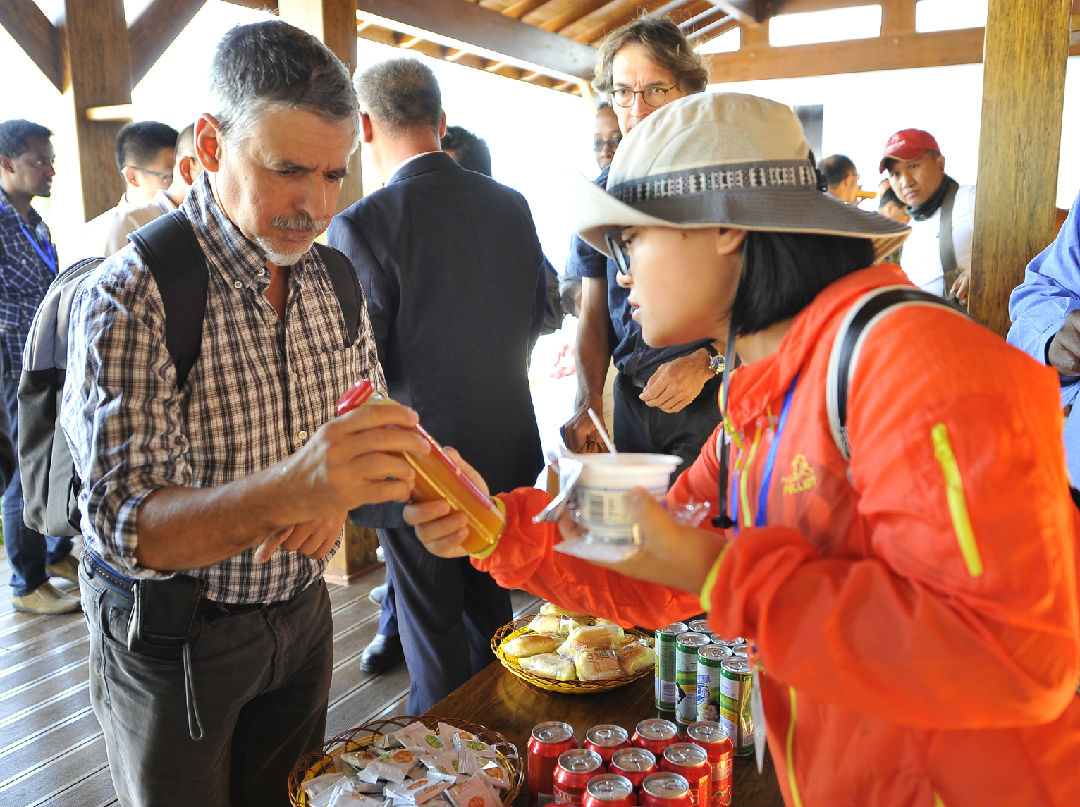UNCCD COP 13 reps seek secrets to China's success
Updated: 2017-09-13  Print
Print 




A staff member (R) introduces sea-buckthorn juice to a foreign delegate.
Local farmers in the area used to chop them down for fuel, not realizing their commercial value. Then, three years ago, Inner Mongolia-based Dongda Group began to purchase the salix mongolica to produce chipboards.
The commercial project now consumes 20,000 hectares of salix mongolica and produces 100,000 cubic meters of chipboards every year, bringing economic benefit to locals.
Despite a downturn in sales, Dongda survived, and the Ordos government launched a salix scimber project in Ejin Horo Banner in October of 2015.
In the Little Horo Operation Area, another tour site, a delegate from Germany showed his interest in the salix scrimber products.
He learned that the products were produced with technologies provided by a Tianjin-based high-end equipment institute affiliated with Tsinghua University.
"The scrimbers are well received in the German market and a sales order for 140 salix doors has just been placed," said the institute's chief engineer Li Maolin, adding that the project helps increase local farmers' income and motivates them to participate in desertification control.
Delegates were surprised to see so many desert products displayed in a pavilion made of salix scrimbers. The eye-openers include salix-made baskets and sea-buckthorn juice.





 Ordos Impression
Ordos Impression Ordos WeChat
Ordos WeChat Ordos Reported
Ordos Reported
